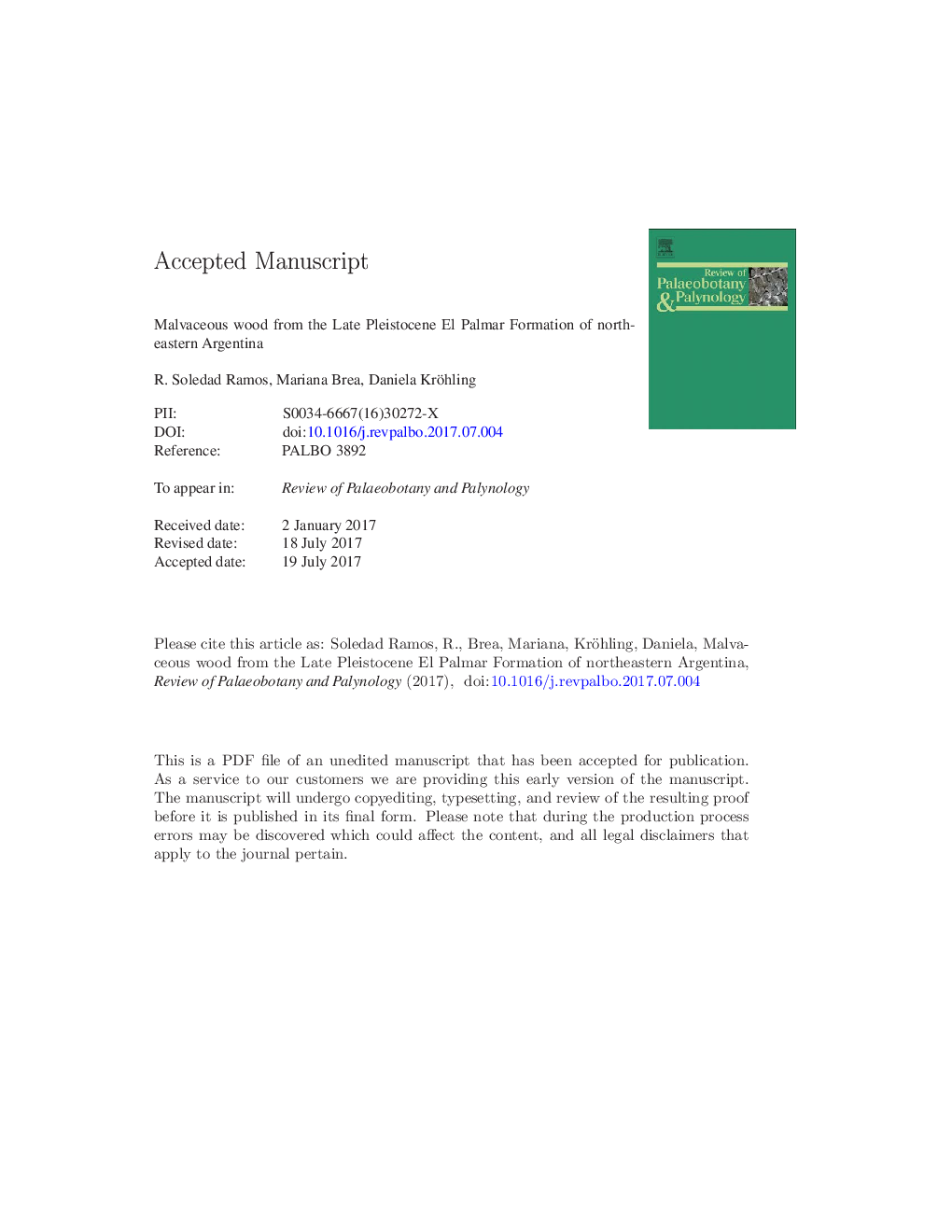| Article ID | Journal | Published Year | Pages | File Type |
|---|---|---|---|---|
| 5788322 | Review of Palaeobotany and Palynology | 2017 | 44 Pages |
Abstract
We describe a new species of Bastardiopsis, Bastardiopsis palaeodensiflora sp. nov., which is the first fossil Malvaceae wood reported in Argentina. It was collected from the Arroyo Yuquerà of El Palmar Formation, a late Quaternary fluvial unit, located in the middle Uruguay River Basin, NE Argentina. The diagnostic features of this fossil wood are growth ring boundaries demarcated by marginal parenchyma; diffuse porous wood; vessels solitary and in radial multiples of 2-3 elements; alternate and minute-to-small sized intervessel pits; tyloses abundant; vessel-ray parenchyma pits similar in size and shape to intervessel pits; vasicentric, and diffuse axial parenchyma; rays of two distinct sizes, mostly 4-5 cells wide; prismatic crystals in upright and/or square marginal cells, sheath cells, non-septate fibres, rays and vessel elements irregularly storied. These features suggest an assignation to Bastardiopsis (K. Schumann) Hassler, a genus with five extant species, extending from the north of South America to northern Argentina, mainly distributed in tropical to temperate areas. The eco-anatomical features, the Nearest Living Relatives (NLRs), the Vulnerability Index, the Mesomorphy ratios and the Taxon Independent Approach (TIA) indicate that this fossil grew under temperate-warm and humid conditions. This is consistent with other proxies (geological, sedimentological and microfossil data) suggesting a similar environment for this region during some periods of the Late Pleistocene.
Keywords
Related Topics
Physical Sciences and Engineering
Earth and Planetary Sciences
Palaeontology
Authors
R. Soledad Ramos, Mariana Brea, Daniela Kröhling,
